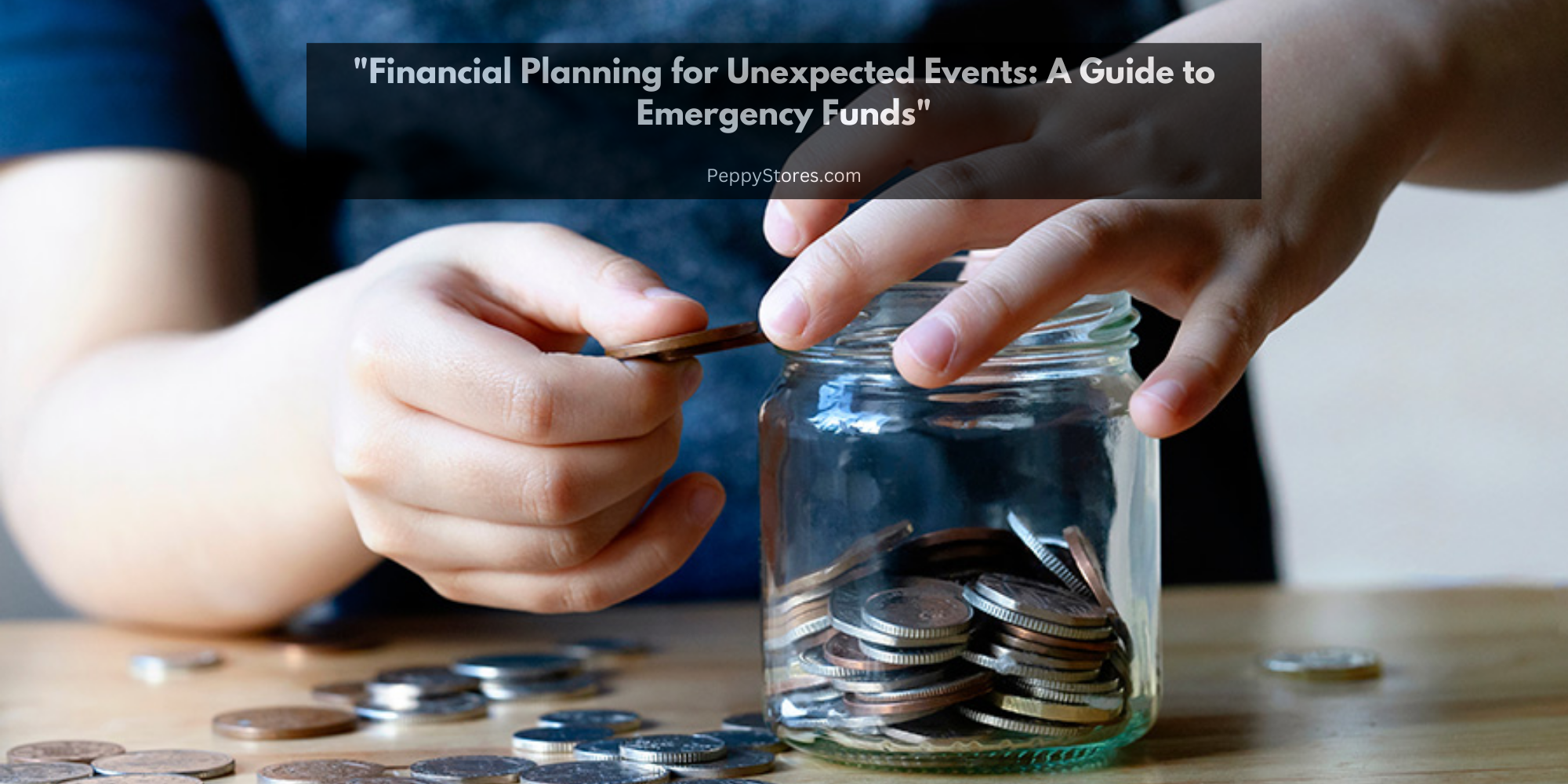Life is unpredictable, and unexpected events—such as medical emergencies, car repairs, or job loss—can have a significant impact on your financial stability. To navigate these uncertainties and safeguard your financial well-being, having an emergency fund is essential. In this comprehensive guide, we will explore the importance of emergency funds, how to build and maintain them, and the role they play in your overall financial planning.
Understanding the Importance of Emergency Funds
1. A Financial Safety Net:
An emergency fund serves as a financial safety net, providing you with a cushion to cover unforeseen expenses without resorting to high-interest debt or depleting your long-term savings.
2. Coping with Job Loss:
In the event of unexpected job loss, an emergency fund offers a crucial bridge to cover living expenses while you search for a new job. It provides peace of mind and reduces the financial strain during periods of unemployment.
3. Handling Medical Emergencies:
Health-related expenses can arise unexpectedly, and having an emergency fund ensures that you can cover medical bills, insurance deductibles, or other healthcare costs without compromising your financial stability.
4. Addressing Car Repairs and Home Maintenance:
Cars break down, and homes require maintenance. An emergency fund allows you to address these unexpected expenses promptly, preventing minor issues from escalating into major financial setbacks.
5. Avoiding High-Interest Debt:
Relying on credit cards or loans to cover unexpected expenses can lead to accumulating high-interest debt. An emergency fund helps you avoid these costly financial pitfalls.
Building Your Emergency Fund
1. Set a Realistic Goal:
Determine how much you need in your emergency fund based on your monthly living expenses. A common recommendation is to aim for three to six months’ worth of living expenses, but your personal circumstances may warrant a different target.
2. Start Small:
If building a full emergency fund seems daunting, start with a more manageable goal, such as $500 or $1,000. As you consistently contribute, you can gradually increase the target amount.
3. Automate Your Savings:
Set up automatic transfers to your emergency fund each month. Treating your savings as a non-negotiable expense ensures a consistent and disciplined approach to building your financial safety net.
4. Use Windfalls Wisely:
Allocate unexpected windfalls, such as tax refunds or work bonuses, to your emergency fund. This accelerates the growth of your savings without impacting your regular budget.
5. Cut Unnecessary Expenses:
Evaluate your monthly expenses and identify areas where you can cut back. Redirect the money saved toward your emergency fund. Sacrificing small luxuries now can lead to significant financial security later.
Where to Keep Your Emergency Fund
1. Accessible, But Separate:
Keep your emergency fund in a separate account from your regular checking and savings accounts. This separation helps prevent impulsive spending while ensuring quick access when needed.
2. Consider a High-Yield Savings Account:
While traditional savings accounts offer safety and liquidity, consider a high-yield savings account for your emergency fund. These accounts often provide higher interest rates, helping your savings grow over time.
3. Money Market Accounts:
Money market accounts combine the accessibility of a savings account with features of an investment. They typically offer higher interest rates than regular savings accounts and provide easy access to funds.
4. Short-Term CDs:
Certificates of deposit (CDs) with short maturities (e.g., three to six months) offer higher interest rates than regular savings accounts. However, be mindful of the penalty for early withdrawal.
Maintaining and Using Your Emergency Fund
1. Regularly Reassess Your Goal:
As your financial situation evolves, reassess your emergency fund goal. Major life changes, such as marriage, having children, or buying a home, may warrant an adjustment to the target amount.
2. Replenish After Withdrawals:
If you need to tap into your emergency fund, make it a priority to replenish the withdrawn amount. This ensures that your financial safety net remains robust and ready for future unexpected events.
3. Use It for True Emergencies:
Reserve your emergency fund for genuine emergencies, such as medical expenses, essential home repairs, or unexpected job loss. Avoid dipping into the fund for non-essential purchases or planned expenses.
4. Prioritize High-Interest Debt:
If you have high-interest debt, consider using your emergency fund to pay it down. While this reduces the size of your emergency fund temporarily, it can save you money on interest payments in the long run.
5. Emergency Fund vs. Sinking Fund:
Differentiate between your emergency fund and sinking funds for specific goals. Sinking funds are designated savings for planned expenses, such as vacations or home renovations, and should not be confused with the emergency fund.
Adjusting Your Emergency Fund Strategy
1. Reevaluate in Times of Stability:
During periods of financial stability, reassess your emergency fund strategy. If your living expenses change or your financial situation improves, consider adjusting your target amount or exploring additional savings and investment opportunities.
2. Explore Low-Risk Investments:
Once you’ve built a robust emergency fund, consider exploring low-risk investments to help your money grow. Options such as conservative mutual funds or exchange-traded funds (ETFs) can offer potential returns while maintaining liquidity.
3. Emergency Fund in Retirement:
As you approach retirement, reassess your emergency fund needs. While retirees still benefit from having liquid assets, the need for a sizable emergency fund may decrease if you have other sources of income and savings.
4. Professional Financial Advice:
Consult with a financial advisor to tailor your emergency fund strategy to your specific circumstances. A professional can provide personalized guidance based on your financial goals, risk tolerance, and overall financial plan.
Conclusion
Building and maintaining an emergency fund is a cornerstone of responsible financial planning. By taking a proactive approach to unexpected events, you can navigate financial challenges with confidence and resilience. Remember that the journey to financial security begins with small, consistent steps. Whether you’re starting to build your emergency fund or reassessing an existing one, the key is to stay committed to your financial well-being. An adequately funded emergency fund not only provides peace of mind but also empowers you to face life’s uncertainties without compromising your financial stability.




